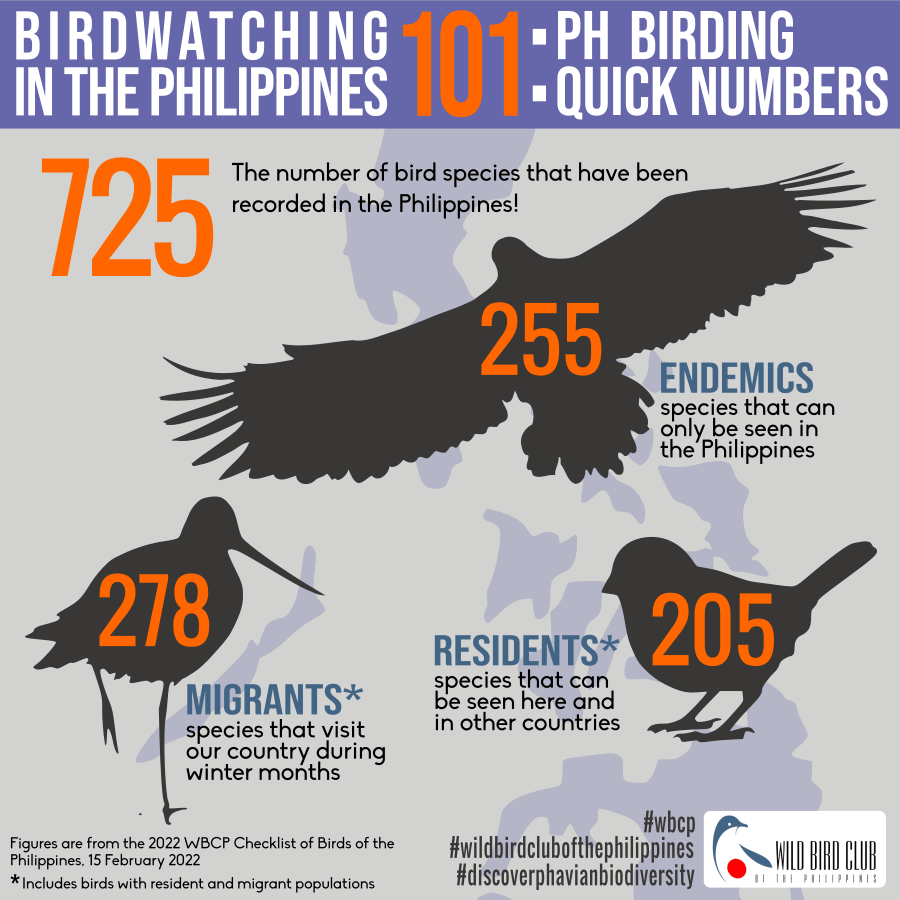By Jops Josef
One of the goals of the Wild Bird Club of the Philippines as a birdwatching club is to maintain records of occurrence of wild Philippine birds. This has been the task of the Records Committee since its inception in 2003. To date, no other organization has produced a more extensive record of wild birds for the country.
Why bird records are important
Keeping a list of birds when one goes out birdwatching is one of the joys of being a birdwatcher. On a personal level, it’s a record of the species observed during a trip in a specific area. A greater joy is when one sees a bird for the first time. When that happens, that observation goes into the birdwatcher’s life list ̶ a list of birds one has seen vis-à-vis all the species of birds worldwide. Think of it as a trophy case for all the birds you have seen, or for the younger ones, a Pokedex.
These observations become more significant when combined with records from other birdwatchers, as these can provide valuable historical records. Over time, these records can be compared to give insights into the patterns of occurrence of species, including details on breeding, movements, distribution.
But more importantly, records can be used for conservation. Bird records can be used to provide a greater understanding of the ornithological value of a site and can provide valuable information to conservation efforts. WBCP records have been used to declare sites as protected areas, one of which is the Las Pinas-Paranaque Wetland Park which is now a RAMSAR site or wetlands of international importance.
How the data is collected
During the early days of the Club up to 2014, records mostly consisted of observations from Club members and data from conservation groups and the Department of Environment and Natural Resources (DENR) conducting annual bird counts in specific sites, as these were the only groups doing birdwatching back then. Observations were submitted via Excel sheets, then collated and verified by the Records Committee before coming out with the yearly bird records and checklist (more on this later). This process was very tedious to say the least, and sometimes caused delays in the publication of the said lists.
Late 2014, with the gaining popularity of the eBird mobile app among birders because of its ease of use to create bird lists, the Records Committee recommended to use the data submitted on eBird to generate the reports. This was done in coordination with the Cornell Lab of Ornithology. This sped up the process as most of the observations have been reviewed by eBird reviewers and the data already in a spreadsheet file. As with the previous process, this was supplemented with data from other organizations.

Another source of data that became part of the reports in recent years are Facebook posts and other social media and messaging platforms from individuals belonging to groups interested in birdwatching that are mined by members of both the Records Committee and Rarities Committee.
Data from this source increased exponentially during the pandemic, when people picked up other interests, such as birdwatching. While these are not complete trip reports compared to the other sources, these were particularly helpful in recording rarities in the field, thus becoming the key information of the Checklists of the Birds of the Philippines.

The reports
There are two reports produced by the WBCP Records Committee annually ̶ the Checklist of Birds of the Philippines and WBCP Bird Records.
The Checklist is the work of WBCP Records Committee and Rarities Committee, which accurately summarizes information on Philippine birds based on verified observations of the previous year. The Checklist includes a wealth of updated information including the number of species observed, distribution of species, range, and records of accidental occurring species, among others.

The WBCP Bird Records presents all verified observations from the previous year, arranged per species with data on the number of individuals and the locations where they have been seen.
Both reports are free to download on the WBCP website through the following links:
- Checklist of Birds of the Philippines – https://birdwatch.ph/philippine-checklist/
- WBCP Records Committee – https://birdwatch.ph/publications/
